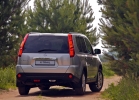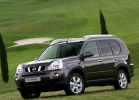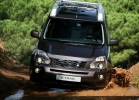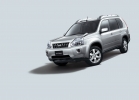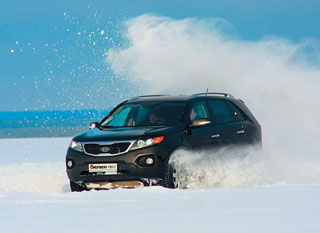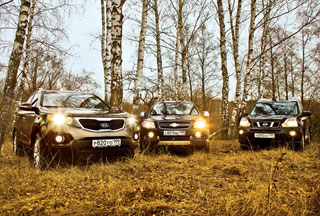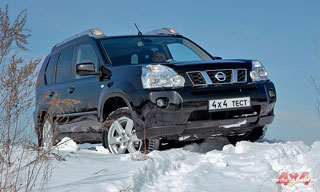Nissan X-Trail test drive since 2007 SUV
Evolutionary
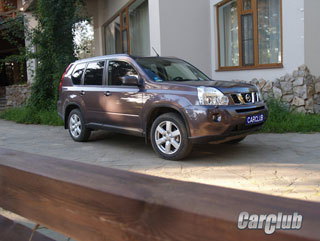 Despite the solid off-road potential, you should not regularly use X-Trail as a jeep.
Despite the solid off-road potential, you should not regularly use X-Trail as a jeep. Seeing the new Nissan X-Trail on the road, you can take it for the restyled version of the model, although in fact we have a completely new car. What is he?
According to the director of the marketing department of Nissan, Yuri Samoilenko, by 2011 the market of foreign cars in Russia will increase from 1 to 4 million cars a year. At the same time, the share of parquet SUVs will grow from the current 8 to 10.3% and will be about 400,000 cars. In order to fully meet the future, Nissan has launched the second SUV over the past year: in addition to a very successful Qashqai, a new X-Trail has started.
 In fact, both cars are built on the same platform, but differ in the length of the wheelbase and completely different bodies. If Qashqai is a stylish city crossover, which is offered in the basic version with front-wheel drive, then the X-Trail tries to seem a real SUV.
In fact, both cars are built on the same platform, but differ in the length of the wheelbase and completely different bodies. If Qashqai is a stylish city crossover, which is offered in the basic version with front-wheel drive, then the X-Trail tries to seem a real SUV. When developing the design of the new model, it was decided to perform it in the previous style, as customers like it, moreover, it stands out significantly against the background of competitors, causing associations with the older brothers Nissan Pathfinder and Patrol. The easiest way to distinguish the new X-Trail from the old headlight, entering the radiator grill, and a higher body.
Once in the X-Trail salon, you understand that the car was created by painstaking geniuses of ergonomics. If just a genius, it would have turned out to be a spectacular, but absolutely impractical interior, as often happens among Italians. With painstaking hands, you can only create something gray and faceless. Everything seems to be thought out in the X-Trail.
 The panel transferred from the center to the driver made it possible to free up space for a large display, which displayed the information of the navigation system and from the rear view camera. Alas, in Russia, it remains only to dream of such options if they appear with us for ordering, then not soon. The cabin provides already 10 cup holders, and 4 of them can cool or heat from the climatic installation. The volume of the glove box is simply huge, and a huge box is placed between the seats. Outwardly, the interior is largely reminiscent of Qashqai, and the instrument panel is completely similar with a small and poorly read round information display. At the same time, the interior looks very fresh and interesting.
The panel transferred from the center to the driver made it possible to free up space for a large display, which displayed the information of the navigation system and from the rear view camera. Alas, in Russia, it remains only to dream of such options if they appear with us for ordering, then not soon. The cabin provides already 10 cup holders, and 4 of them can cool or heat from the climatic installation. The volume of the glove box is simply huge, and a huge box is placed between the seats. Outwardly, the interior is largely reminiscent of Qashqai, and the instrument panel is completely similar with a small and poorly read round information display. At the same time, the interior looks very fresh and interesting. But the rear passengers were lucky, alas, less. In the presence of a hatch, there are not so many places sitting from the back as you expect from the SUV. There is no stock in length either, and the rear doors turned out to be very small. Entering and getting out of the car inconvenient legs stuck in a narrow opening between the counter and the rear sofa. A significant part of the cabin is given to the trunk of its volume of 603 liters amazes the imagination. And the maximum volume with folded rear seats is as much as 1733 liters: for comparison in Mazda CX-7, this parameter is 774 liters. To better organize the existing space, a double floor is organized in the trunk: comfortable drawers are hidden under it, in which there is a place for all kinds of road utensils from gloves to a towing cable and first -aid kit. But with a spare wheel, a puncture came out, it is located under the floor from the side of the cabin. To get it, you will need not only to free the trunk, but also to disassemble all the drawers.
 The first thing you pay attention to in the cabin is a huge hood that is clearly visible from behind the steering wheel. This is completely uncharacteristic for modern cars and helps to better navigate the traffic flow and on the roads as if you are sitting behind the wheel of not a SUV, but a real SUV.
The first thing you pay attention to in the cabin is a huge hood that is clearly visible from behind the steering wheel. This is completely uncharacteristic for modern cars and helps to better navigate the traffic flow and on the roads as if you are sitting behind the wheel of not a SUV, but a real SUV. A full-wheel drive transmission for X-Trail is the same as that, the driver can choose from three modes of operation: front-wheel drive full with automatic connecting the rear wheels and imitation of the blocking of the central differential. In the latter case, up to 50% torque can be transmitted back. Such a choice allows you to slightly reduce fuel consumption during operation on solid roads. An even greater savings are promised by a wedge -reproach variator, which replaced the traditional machine. For the Russian market, X-Trail is offered to choose from 2.0 and 2.5 liters, with power, respectively, 141 and 169 hp. Diesels that were available on the previous generation of X-Trail, alas, are not provided for popular motors in Europe are not adapted to Russian diesel fuel. Both gasoline engines can be aggregated with a mechanical checkpoint or variator. Our choice fell on the top x-trail with a 2.5-liter engine with a variator.
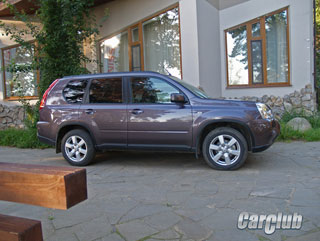 Our route ran along the Dmitrovsky highway towards the Tver region. In traffic jams, it is almost impossible to feel the difference between the variator and the traditional automaton. Everything happens the same smoothly: it is worth releasing gas and the car confidently rolls forward. With the increase in speed, the advantages of the variator become more noticeable acceleration occurs with constant revolutions of the motor, which depend on the force of pressing the gas pedal. If you look only at the road, then the mournful buzz of the motor lubricates the feeling of dynamics, and therefore the speed has to be controlled by a speedometer. It is possible to evaluate how quickly the car accelerates is either a stopwatch or relative to other participants in the movement, monotony deprives the driver of the excitement, but it brings calm and measurement of gear shifts in principle. Up to 140 km/h X-Trail accelerates quickly enough, and then the aerodynamic resistance of the high body becomes noticeably, and the SUV begins to bargain for each division of the speedometer.
Our route ran along the Dmitrovsky highway towards the Tver region. In traffic jams, it is almost impossible to feel the difference between the variator and the traditional automaton. Everything happens the same smoothly: it is worth releasing gas and the car confidently rolls forward. With the increase in speed, the advantages of the variator become more noticeable acceleration occurs with constant revolutions of the motor, which depend on the force of pressing the gas pedal. If you look only at the road, then the mournful buzz of the motor lubricates the feeling of dynamics, and therefore the speed has to be controlled by a speedometer. It is possible to evaluate how quickly the car accelerates is either a stopwatch or relative to other participants in the movement, monotony deprives the driver of the excitement, but it brings calm and measurement of gear shifts in principle. Up to 140 km/h X-Trail accelerates quickly enough, and then the aerodynamic resistance of the high body becomes noticeably, and the SUV begins to bargain for each division of the speedometer. 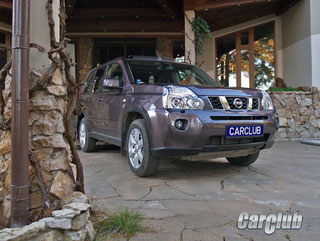 Compared to Qashqai, X-Trail received a thicker front stabilizer and shock absorbers that change their rigidity depending on the speed of moving the rod. But according to the wheel, the X-Trail is very similar to his younger brother, a similar, very weighty, but little realistic reactive force on the steering wheel. The balance between comfort and handling is exactly in the middle. The perfectionist will not find any accuracy of reactions or comfort in the SUV, and for an inexperienced driver, X-TRIL will be just right.
Compared to Qashqai, X-Trail received a thicker front stabilizer and shock absorbers that change their rigidity depending on the speed of moving the rod. But according to the wheel, the X-Trail is very similar to his younger brother, a similar, very weighty, but little realistic reactive force on the steering wheel. The balance between comfort and handling is exactly in the middle. The perfectionist will not find any accuracy of reactions or comfort in the SUV, and for an inexperienced driver, X-TRIL will be just right. Moreover, X-Trail feels quite well on off-road. Of course, storming the fords on it is not worth the electronic hydromoft in the rear wheels drive is unlikely to last a long time after the adoption of mud baths. But the SUV is capable of playing after the rain in the primer. The main thing will not accelerate too much, otherwise the suspension strokes are not so large to absorb strong blows, and the overhangs of the body at the body are solid.
 By the way, despite the solid off-road potential, it is still not worth using the X-Trail as a jeep. As practice shows, in fact, a passenger suspension with increased road clearance is not very adapted to such tests, and the account from the service after the next can unpleasantly surprise. But getting stuck on the X-Trail is quite difficult.
By the way, despite the solid off-road potential, it is still not worth using the X-Trail as a jeep. As practice shows, in fact, a passenger suspension with increased road clearance is not very adapted to such tests, and the account from the service after the next can unpleasantly surprise. But getting stuck on the X-Trail is quite difficult. As a result, a compromise is achieved by almost all the characteristics of the machine. But do you need such a car? For those who need a serious SUV, but are not ready to fork out on Patrol, a pickup like Navara or Mazda BT-50 will be a good choice. For urban needs with rare sorties to nature, the potential of Nissan Qashqai is quite enough.
Why then do you need a X-TRIIL? Firstly, for those who still cannot finally decide on the choice between the SUV and the real rogue, and secondly, for those who do not want the next year to stand in line for Qashqai or need a large trunk. Who has become interested in retail prices for X-Trail begin at 891,000 rubles.
Text: Leonid Pavlov
+
Good cross -country ability
A thoughtful salon
Big trunk
-
Close rear seats
The price of the tested car is 1 087 700 rubles
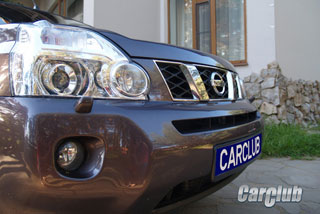
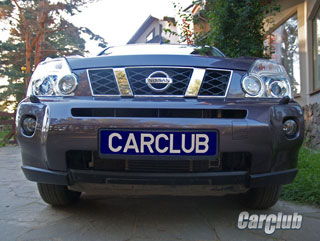
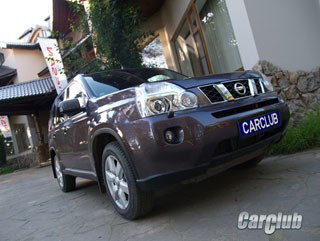


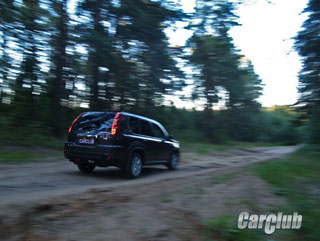
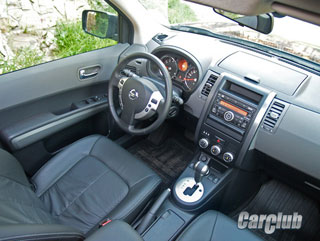
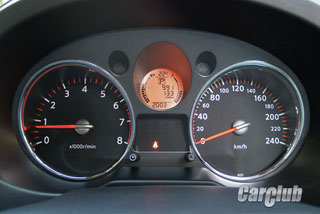

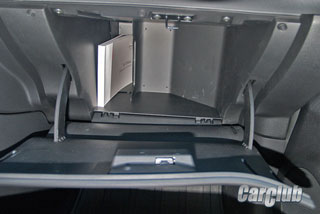

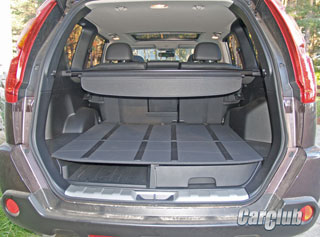
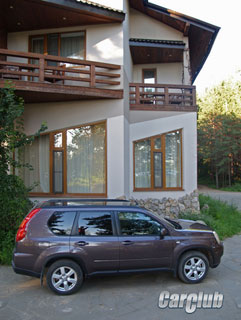






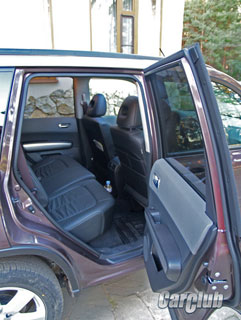
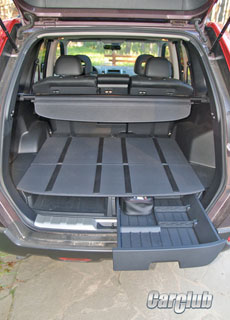
Source: Carclub.ru
NISSAN X-TRIIL Video Video since 2007
Nissan X-Trail Crash Video since 2007
Nissan X-Trail test drives since 2007
Nissan X-Trail Crash Test since 2007
Krassh Test: Detailed Information30%
Driver and passengers
12%
Pedestrians
43%
Children-passengers


